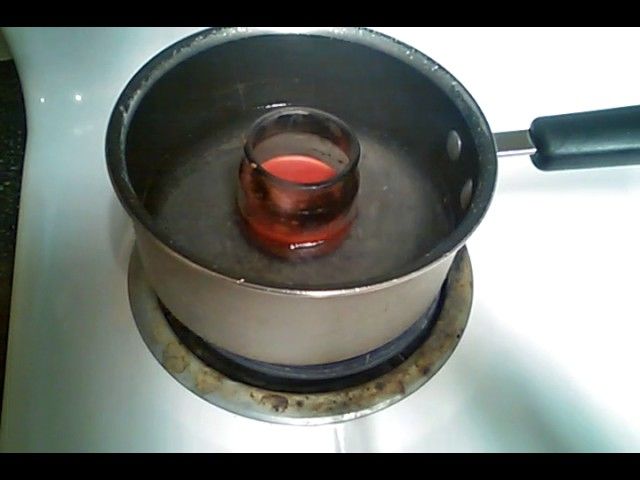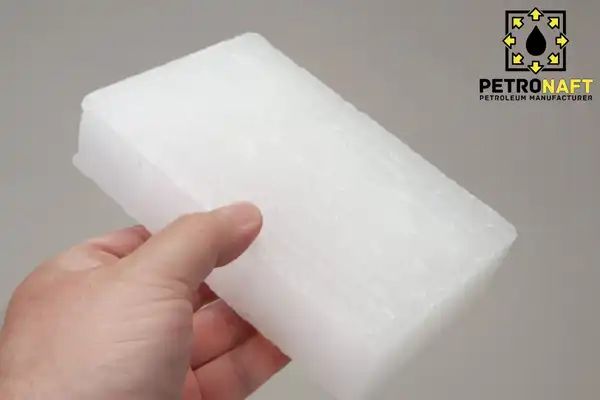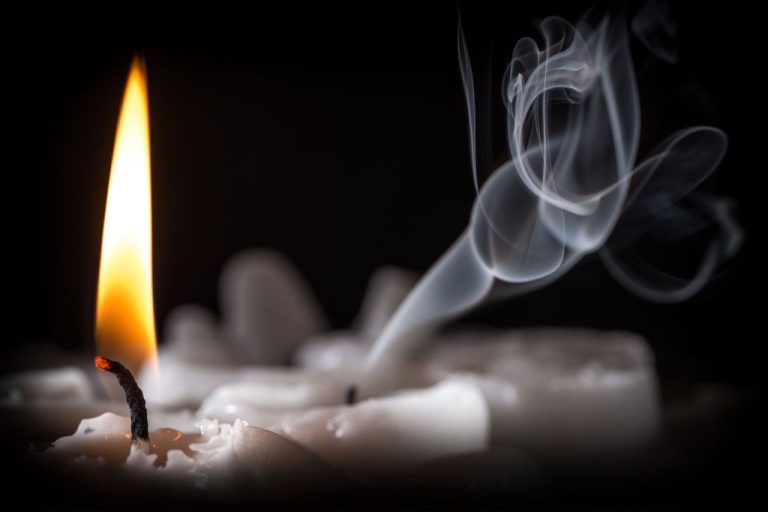What Is The Definition Of A Wick?
A wick is a simple piece of string or cord that is used to draw liquid fuel up to the flame in items such as candles, oil lamps, and lighters so that the fuel can be burned efficiently. The wick works by capillary action, which allows the liquid to travel up the wick’s fibers to the flame so it can vaporize and continue burning.
History
The origins of candle wicks date back thousands of years. Ancient civilizations like Egypt and Rome used papyrus, flax, and strips of linen as early wicking materials to draw melted wax up through crude candles. These materials worked as simple wicks but often gave off smoke and soot.
As candlemaking advanced during the Middle Ages in Europe, wicks transitioned to using loosely braided fibers like cotton. However, these cotton wicks still produced excess soot that resulted in dim, smoky flames. It wasn’t until the early 19th century that candlers discovered that tightly braiding cotton threads created a brighter-burning wick.
According to the Friendly Candle Company, “It was at this point that manufacturers started producing candles using braided cotton that had been chemically treated. This chemically treated string burned cleaner and was less likely to bend than the untreated braided cotton wicks” (Source).
Modern wicking as we know it today emerged by the late 19th century. With the invention of gas lighting and eventually electric lighting, candles transitioned from being relied on for illumination to being used more for decoration and fragrance. This allowed candle wicks to further specialize based on the type of wax and use.
Materials
Some common materials used for candle wicks today include:
Cotton – Cotton is one of the most popular wick materials. It has a clean burn and minimal soot. Cotton wicks are soft and flexible. Sources: https://smellscandle.com/blogs/news/what-are-candle-wicks-made-of-everything-you-need-to-know, https://www.nosebestcandles.com/post/what-are-candle-wicks-made-of
Wooden – Wooden wicks make a crackling sound as they burn. Popular woods include bamboo and wood veneers. Wood wicks have a natural feel.
Paper – Paper wicks are eco-friendly and low-cost. However, they may burn faster than other wick types.
Hemp – Hemp wicks are sturdy and release less soot. Hemp is a renewable and sustainable material.
Beeswax – Beeswax coated wicks help anchor the wick and assist with an even burn.
The Purpose of a Candle Wick
The purpose of a candle wick is to deliver fuel to the flame in a controlled way. Wicks work through a process called capillary action. When the candle is lit, the flame melts the wax around the wick. This turns the solid wax into liquid fuel. The wick then absorbs the liquid wax, drawing it up through the wick via capillary action. The wax travels up the wick and is vaporized at the tip by the flame. This vaporized wax fuel keeps the flame burning. The wick controls the rate of fuel delivery based on the wick’s thickness and fiber makeup. Thicker wicks absorb more liquid wax and allow a bigger flame. Smaller wicks deliver less wax and sustain a smaller flame. The wick material also impacts how quickly the fuel travels up. Cotton wicks absorb the wax faster than wood or paper wicks. This capillary action process allows the wick to bring fuel to the flame in a controlled, sustained way. Without the wick’s capillary action, the candle would not burn properly.
Types
There are several main types of wicks used for candles:
Cotton: Cotton is one of the most common wicks used. It’s affordable and burns cleanly. Cotton wicks come in different ply, with more plies meaning more strands twisted together for a sturdier wick. 2-ply cotton wicks work well for containers candles while 3-ply cotton wicks are often used for pillars and votives (https://candles.org/elements-of-a-candle/wicks/).
Wooden: Wooden wicks are made from natural wood fibers. As they burn, they crackle like a wood fire. They have a woodsy, natural aroma and can be used to complement natural or woodsy scented candles. Wooden wicks should only be used for container candles, not pillars or votives (https://www.cotebougie.com/blog/en/the-different-types-of-candle-wicks/).
Hemp: Hemp wicks are made from natural hemp fibers. They have an earthy quality and burn slowly and evenly. Hemp wicks work well for container or pillar candles and are a good choice for natural or earthy scents (https://fraendi.com/blogs/blog/what-are-the-different-types-of-wicks-you-can-use-to-make-a-candle).
Wick Sizing
The width of a wick plays a crucial role in how a candle burns. Wider wicks are able to absorb more wax and fuel the flame with a greater supply of melted wax. This results in a larger flame. On the other hand, thinner wicks absorb less wax and produce a smaller flame.

Choosing the right wick width for a candle is important for proper burning. If the wick is too wide for the diameter of the candle, it can create excess sooting from a flame that is too large. Using a wick that is too narrow can lead to tunneling, poor wax pool formation, and a flame that is too small and dims easily.
As a general guideline, smaller candles like votives and tarts require thinner wicks such as CD wicks. As the diameter of a candle increases, the wick size should also increase progressively. Pillar candles and containers with diameters between 2-3 inches perform well with ECO wicks. Moving up to larger jars and pillars, wicks like LX and HTP are better suited to handle the higher wax volume.
Wick sizing charts provided by reputable wick manufacturers like CandleScience are useful references to pair the proper wick width with a given candle diameter. Testing wicks beforehand and monitoring candle testing results also helps dial in the optimal wick size.
Properly sizing the wick for the unique specifications of each candle design is crucial for optimizing burn performance. With the right wick width, candles can provide complete wax pool creation, an ideal melt rate, and a flame height and brightness tailored to the candle’s dimensions and purposes.
Wick Trimming
Proper wick maintenance through regular trimming is essential for optimal candle performance and safety. As this source explains, untrimmed wicks can cause issues like tunneling, smoking, soot, and uneven burning. Trimming the wick to 1⁄4 inch before each lighting helps the candle burn evenly and prevents mushrooming of the wick tip. This source notes that trimming extends wick and candle life by slowing the burn rate. It’s recommended to use a sharp wick trimmer for a clean cut and to avoid fraying. Trimming also removes any curled wick pieces or carbon buildup. Proper wick length is key – too short can drown the wick, while too long creates a large flame and smoke. With routine trimming, candles will burn cleaner and more efficiently.
Wick Problems
Candle wicks can often become clogged with carbon deposits known as “mushrooming.” When this occurs, it will cause the wick to smoke excessively and impair proper burning. Mushrooming happens when the wick is too wide for the wax pool. This allows the wick to overheat and produce more soot than normal. Using the proper wick width for the candle diameter helps prevent mushrooming.
Candle tunneling is another common problem caused by an improper wick. This is when the wax melts unevenly, creating a hole or tunnel in the top layer of wax. Tunneling happens when the wick is too small for the candle diameter and does not generate enough heat. The wax around the edges stays cooler and does not liquefy properly. Using a larger wick suitable for the candle size helps minimize tunneling issues.
These wick-related issues can cause the candle to smoke, burn unevenly, or extinguish itself. Proper wick sizing and maintenance are key to avoiding common candle problems.
Wick Alternatives
While traditional cotton and paper fiber wicks are commonly used, there are many other options for wicking material. Some popular alternatives include:
Reed diffusers – Rather than using a wick, reed diffusers utilize bamboo reeds to disperse fragrance oils. The reeds soak up the oil and allow the scent to waft into the air gradually over time (Source: https://www.tiktok.com/discover/candle-wick-alternatives).
Wooden wicks – Wooden wicks are made from natural wood fibers and contain no dyes or chemicals. As the wick burns, it makes a crackling sound like a fireplace. Wooden wicks are said to burn cleaner than traditional wicks (Source: https://www.pinterest.com/ideas/what-can-you-use-for-a-candle-wick/918200772672/).
Torch wicks – Extra large wicks designed for outdoor torches and tiki candles. Torch wicks are thicker to withstand wind and weather. Popular torch wick materials include paper fiber, cotton, and wood composite fibers (Source: https://www.tikibrand.com/5-mini-torch-wick-replacements-8-pack).
Conclusion
In summary, the wick is an essential component of a candle. Its purpose is to deliver wax to the flame by using capillary action to draw liquefied wax up the wick. Wicks are typically made of materials like cotton, wood, or hemp, that won’t burn themselves but will transfer the flame to the wax. Proper wick sizing and maintenance are important to promote complete wax consumption and an even burn. Without a wick to act as a controlled fuel delivery system, candles would not be able to burn in the consistent, controllable manner that makes them so useful. The wick makes the controlled candle flame possible.






